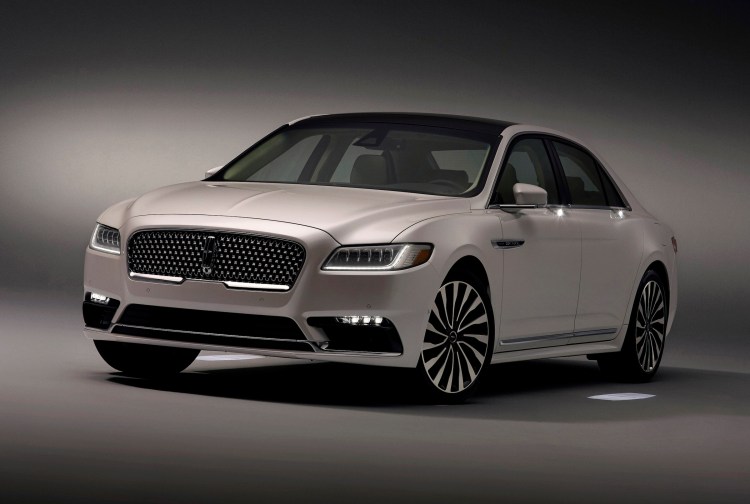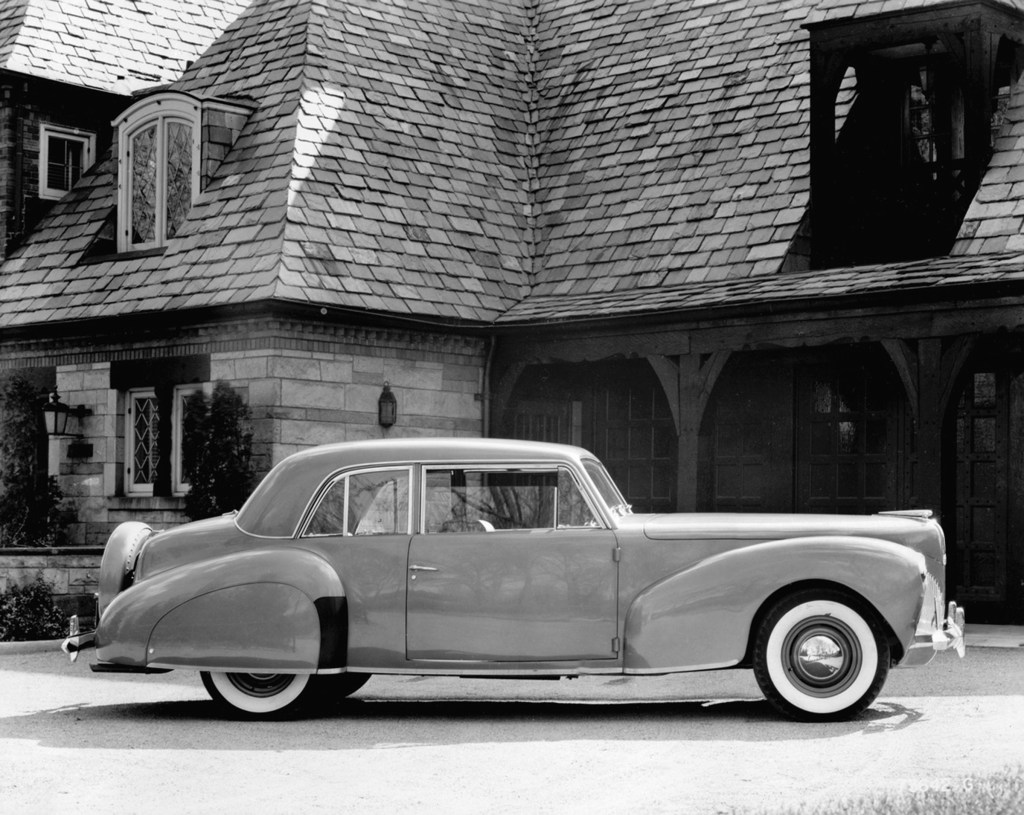It’s easy to hate business travel after spending too many hours squeezed into tiny, untidy seats.
Fortunately, once your flight lands, there’s usually a Lincoln Town Car waiting to whisk you to a hotel. And thank goodness. After the wretched experience of flying, one can really appreciate the car’s quiet cabin, roomy rear seat and gentle ride, which is soft enough to soothe your soul.
The problem is, Lincoln last made the Town Car in 2010, so most are showing their age.
So imagine my surprise on a recent business trip when I found the black car waiting for me at the airport wasn’t some fading old hulk of a Town Car but a brand new 2017 Lincoln Continental.
It really was a shock; to my knowledge, Lincoln hadn’t, until then, supplied any to automotive journalists, which had made me wonder if company execs were embarrassed by the new full-size flagship.
But during the ride to the hotel, the Continental fully showed what Lincoln marketers must know about their sizable steed: While it’s not a car you’d take to Germany’s legendary Nurburgring race track, it’s a perfectly comforting, capable and quiet sanctuary – and what’s wrong with that?
Nothing.
The 2017 Continental is a sophisticated rethink of an American luxury car that’s comfortable in its own skin and features a persona uniquely of this continent, not the one across the pond for which this car was named 78 years ago.
That might explain why Lincoln, in crafting it, used a modified version of Ford’s front-drive-based CD4 platform, which also underpins Lincoln’s MKX and MKZ models.
This car is no midget, stretching more than 200 inches and weighing more than 4,500 pounds. Its cabin is impressively roomy, with 44 inches of front-seat legroom and 41.3 inches for legs in the rear. Trunk space is less generous than you’d expect, however, measuring a mere 16.7 cubic feet.
Still, comfort drives this cabin’s design. Consider the front seats, which can be adjusted 24 different ways. Actually, 30 adjustments are available if you spring for an optional upgrade.
Overall ambience is far beyond anything Lincoln has delivered in decades. The test vehicle, in top-of-the-line Black Label trim with Rhapsody Blue Venetian leather, was downright indulgent.
And as with any true luxury car, there are crafty flourishes throughout, including sublime Revel audio speaker grilles, knurled metal controls, and pushbuttons, not handles, to open the doors, a novel touch.
All this abundance is moved by one of three powerplants. Base models get Ford’s 3.7-liter V-6, rated at 305 horsepower and 280 pound-feet of torque. Unless you have a tight budget, opt instead for the 2.7-liter twin-turbo V-6 that generates 335 horsepower and 380 pound-feet of torque.
Better yet is Lincoln’s exclusive 3.0-liter twin-turbo V-6, which pumps out 400 horsepower and 400 pound-feet of torque. A six-speed automatic transmission is standard.
The two smaller engines come with front-wheel or all-wheel drive. The top-of-the-line engine comes solely with all-wheel drive and its system differs from the front-wheel-drive-biased systems used on other Continentals, having the ability to send all of its power to one wheel if it’s the only tire with traction.
Lincolns haven’t offered drivers many thrills since winning the 1952-54 Mexican Pan-American road races, and given this one’s lavish interior, you’d be forgiven for leaving the navigating to others.
But the Continental proves resolute in power delivery, at least with the 3.0-liter V-6. It launches off the line and always has the moxie for a passing punch. Yet it cruises quietly and contentedly down pokey parkways.
Its ride is well-controlled and plush enough to please the most difficult passengers. It retains the essential Lincoln trait of being a cruiser, not a bruiser.
And unlike some luxury rivals, this modern take on classic American extravagance isn’t trying to emulate automobiles from the fatherland.
Instead, it’s shelter from the storm.
Or airline flights, for that matter.
How a CEO’s request endowed a marque with its identity:
Dating to 1939, the Lincoln Continental is one of the auto industry’s oldest nameplates.
It came about when Ford Motor Company president Edsel Ford asked chief company stylist Eugene Gregorie to create a custom car for him, something “Continental,” or European in style, for an upcoming Palm Beach, Fla., vacation. It proved popular with Palm Beach socialites, and Edsel put it into production.
Available as a two-door coupe or convertible and powered by a 12-cylinder engine, it went on to become a classic. Famed architect Frank Lloyd Wright thought it was the most beautiful car ever designed and bought two. The original run of the Continental, the last 12-cylinder car produced by a U.S. automaker, lasted through 1948.
The name reappeared in 1956, when Edsel’s son Henry Ford II revived it as the Continental Mark II. Available only as a coupe with a V-8 engine, the hand-built car cost a breathtaking $10,000, the equivalent of $91,318 today. Elvis Presley drove one; so did Frank Sinatra. And despite the price, Ford lost $1,000 on each one during the two years it was built.
By 1961, Lincoln had one model, the Continental sedan, a car that became a hallmark for the brand. After that, the name was haphazardly plastered on any number of models with varying degrees of success. Before the new 2017 model, it was last used on a series of Ford Taurus-derived sedans built through 2002.
Given its provenance, it’s little wonder that Lincoln revived the Continental name in a bid to regain significance after decades of irrelevance.
Send questions/comments to the editors.




Success. Please wait for the page to reload. If the page does not reload within 5 seconds, please refresh the page.
Enter your email and password to access comments.
Hi, to comment on stories you must . This profile is in addition to your subscription and website login.
Already have a commenting profile? .
Invalid username/password.
Please check your email to confirm and complete your registration.
Only subscribers are eligible to post comments. Please subscribe or login first for digital access. Here’s why.
Use the form below to reset your password. When you've submitted your account email, we will send an email with a reset code.